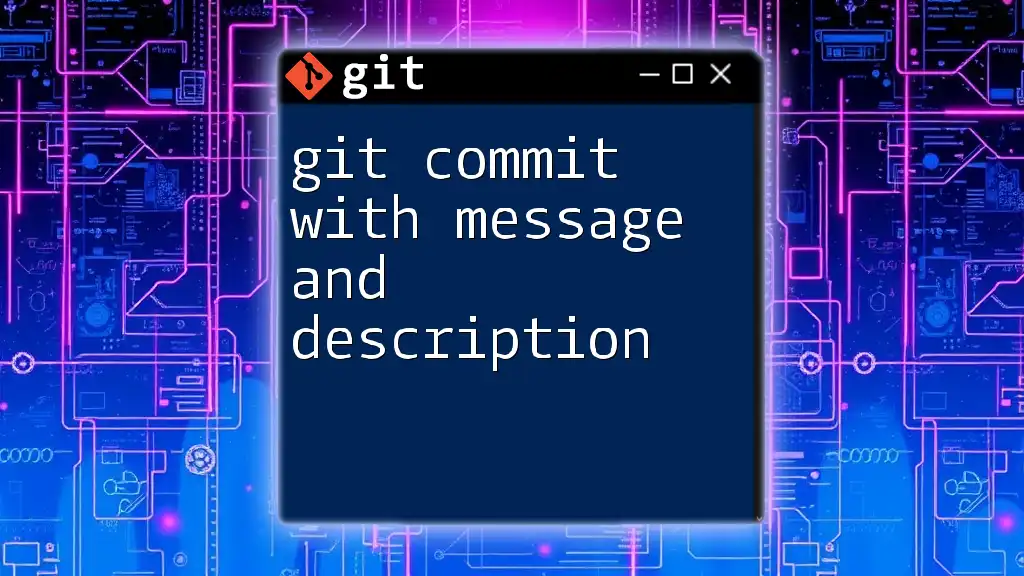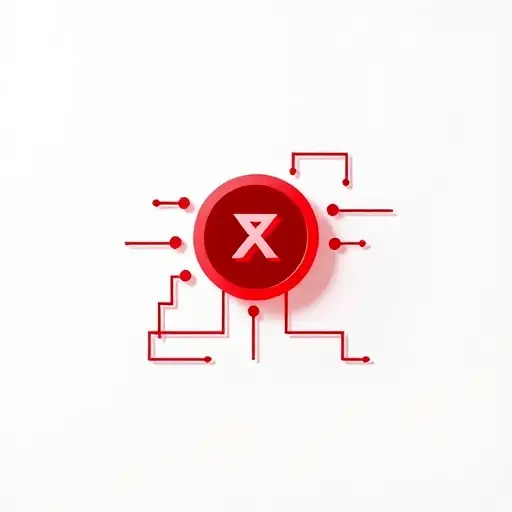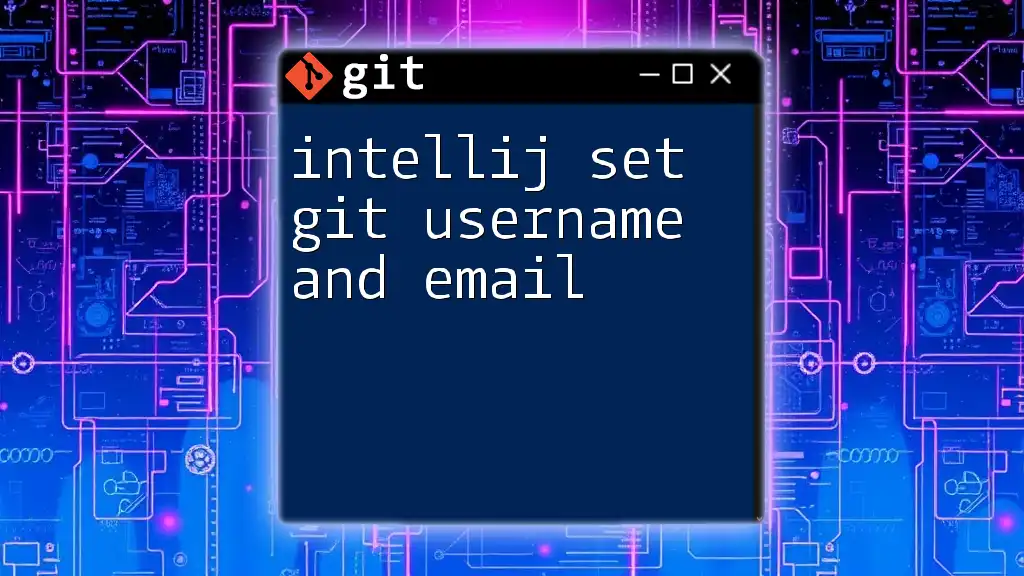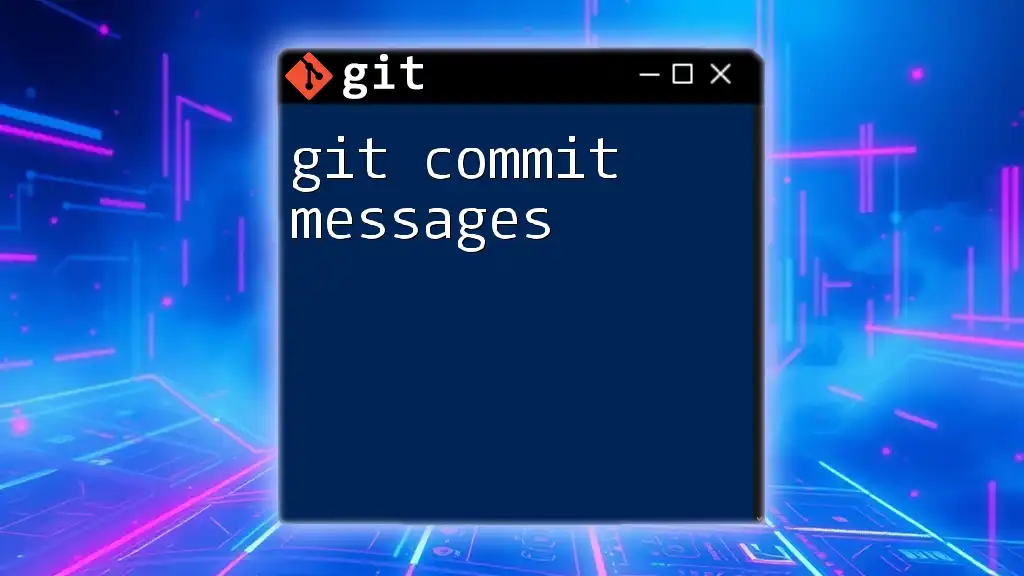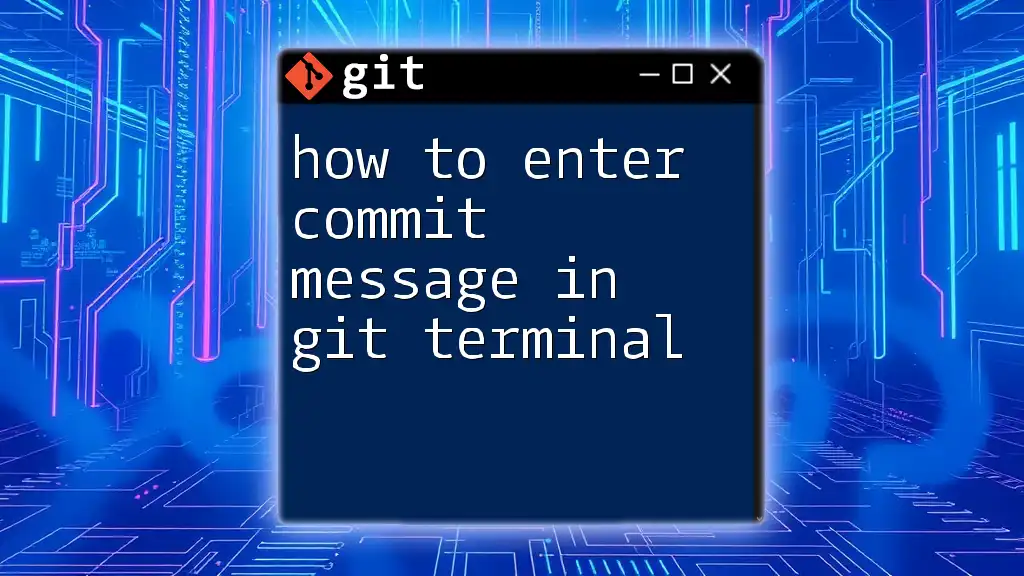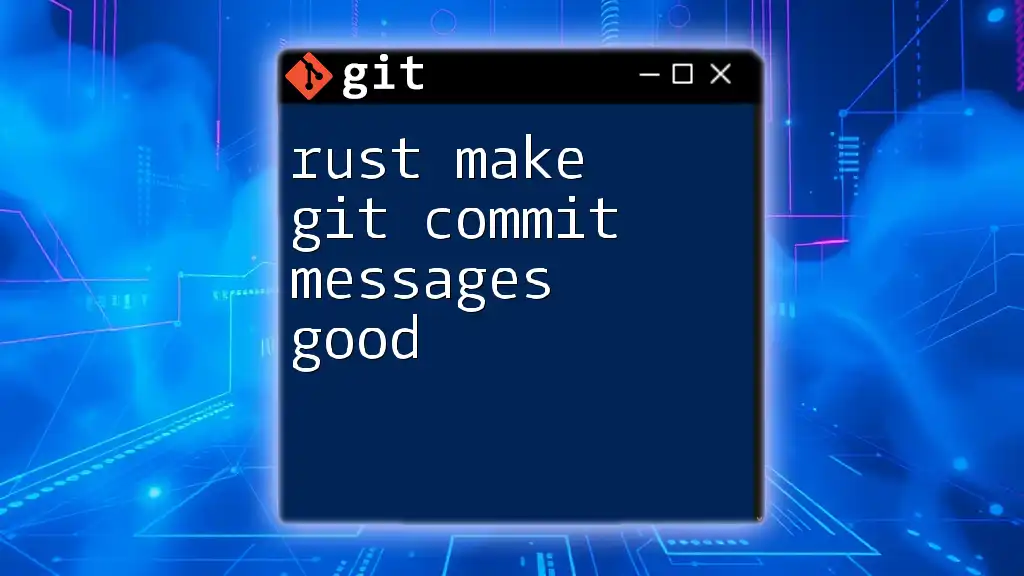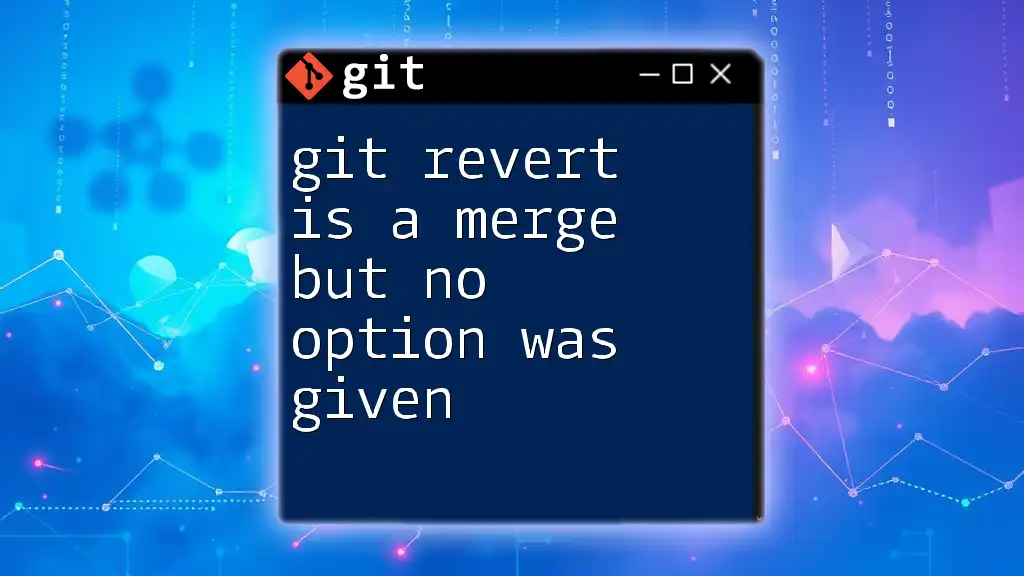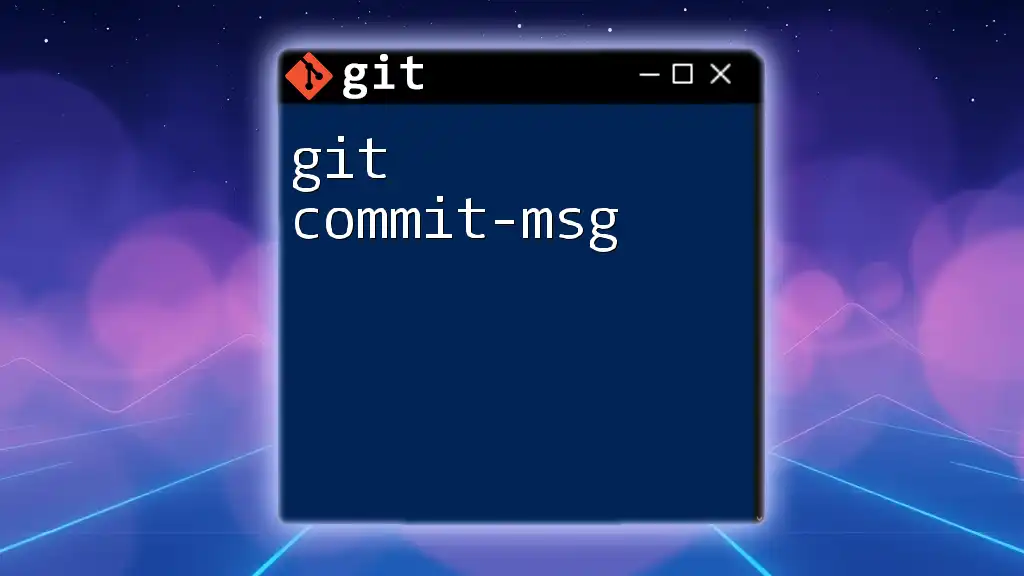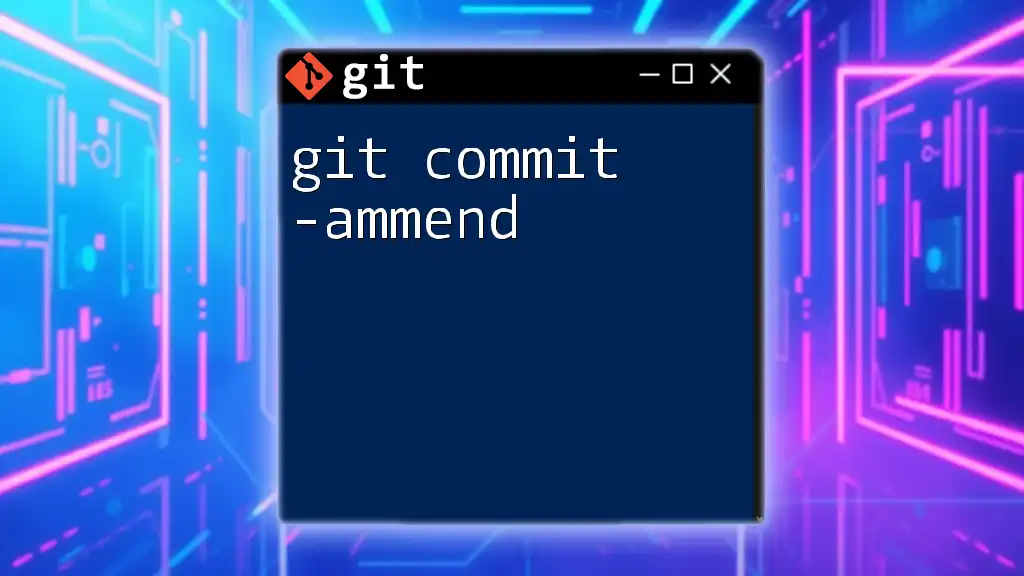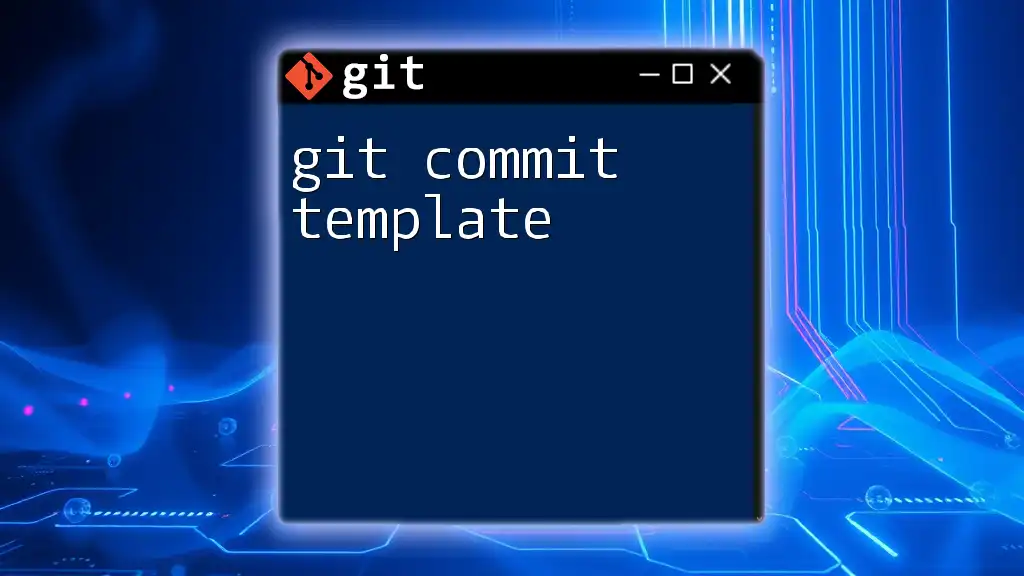To create a Git commit with a concise message and a detailed description, you can use the following command syntax:
git commit -m "Short message" -m "Detailed description of the changes made."
What is a Git Commit?
A commit is a fundamental concept in Git that represents a snapshot of your project at a specific point in time. When you make changes to your files, a commit captures these changes, allowing you to keep a complete history of your project’s evolution. Essentially, commits enable you to track changes, collaborate with others, and revert to previous states if needed.
The role of commits in version control cannot be overstated. They serve as the backbone of any Git-managed project, allowing not only for individual tracking of contributions but also for collaboration among multiple team members, all while ensuring that the integrity of the project is maintained.
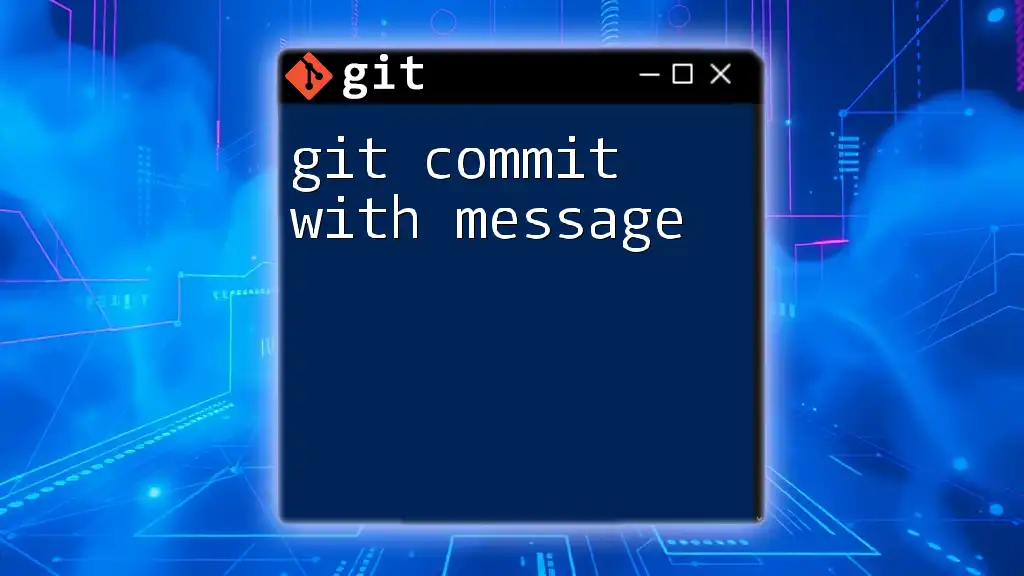
Understanding Commit Messages
A commit message is a short description that accompanies a commit, summarizing the changes made. These messages are vital for documentation and communication within a project. Well-written commit messages provide context to others (and future you) regarding what changes were made and why.
The importance of writing good commit messages lies in their ability to:
- Facilitate easier code reviews
- Help new team members understand the project history
- Serve as an effective communication tool among developers
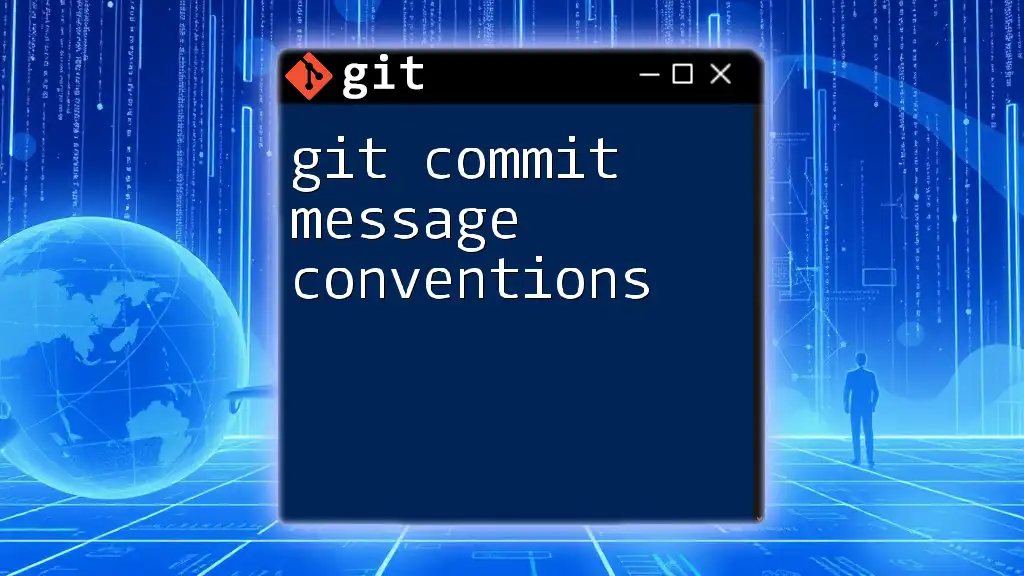
Basic Syntax for Git Commit
The most common syntax for making a commit in Git is straightforward:
git commit -m "Your message here"
In this command, the `-m` flag signifies that you’re providing a message directly in the command line.
Example of a Basic Commit
Consider the following example of a basic commit command:
git commit -m "Fix typo in README"
This command will commit the changes made to the README file with a clear and concise message, indicating what was fixed.
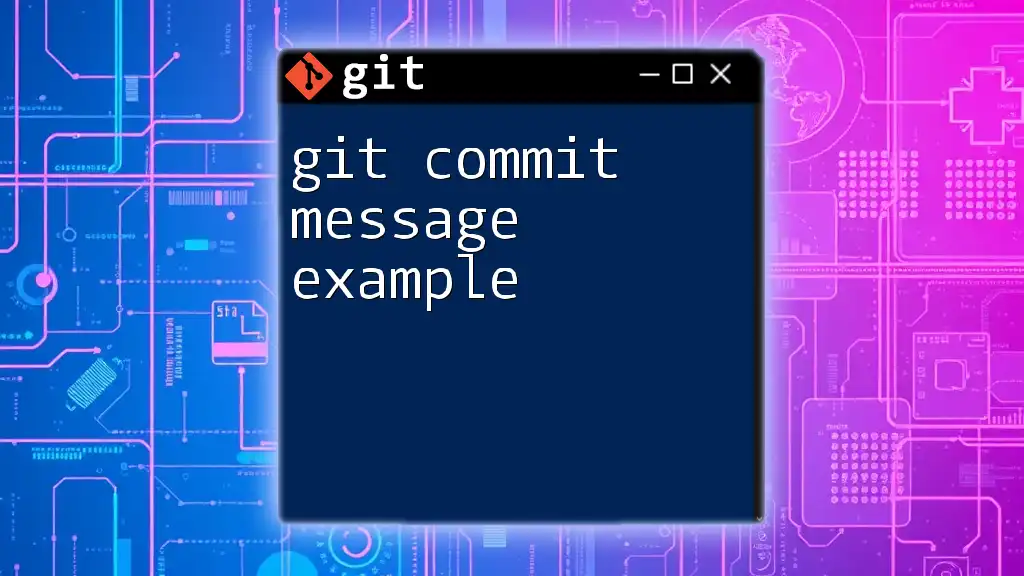
Adding Descriptions to Commits
To further enhance the context of your commits, it can be beneficial to include a description. A description is particularly useful when the changes are complex, requiring additional commentary to explain the reasoning behind them.
When creating a commit with both a short message and a detailed description, you can use the `-m` flag twice:
Syntax for a Commit with Description
git commit -m "Short message" -m "Detailed description explaining the changes made..."
Example of a Commit with a Description
Here’s an example illustrating this approach:
git commit -m "Update user authentication module" -m "Refactored the login process to improve security and user experience. Updated tests to reflect changes."
In this instance, the first message summarizes the action, while the second provides deep context, ensuring that any developer can quickly grasp the commit's significance.
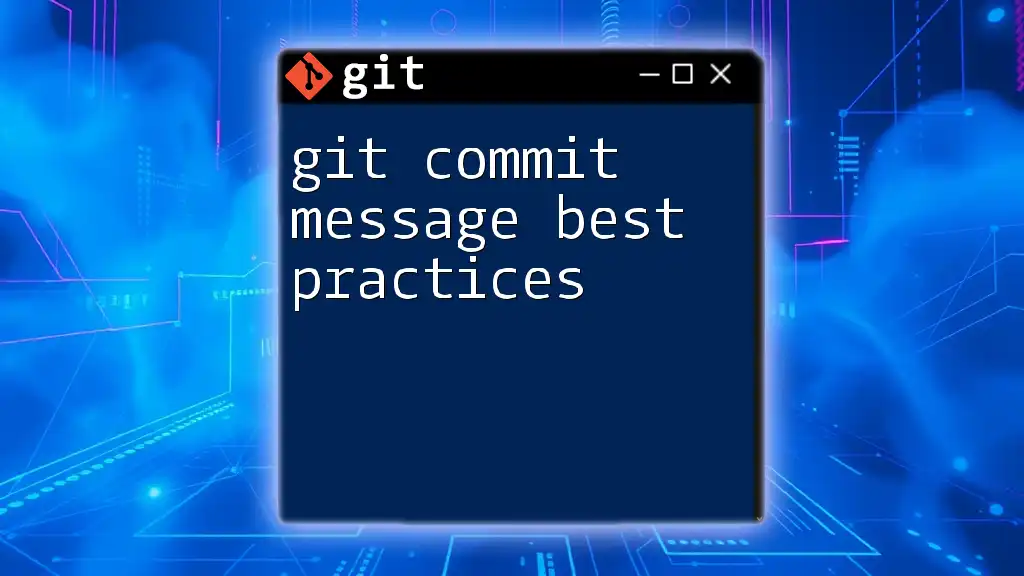
Best Practices for Writing Commit Messages
To write effective commit messages, it helps to follow a structured format. A good commit message typically consists of two parts: a summary line and a detailed explanation.
-
Summary Line: This should be a concise statement of what the commit does. It ideally should be limited to 50 characters as a general rule of thumb.
-
Detailed Explanation: This section can contain further details, why the changes were made, and any relevant information including references to issues, tickets, or related commits. Using this approach usually involves leaving a blank line after the summary.
Conventional Commit Format
An excellent way to structure your commit messages is by adopting a conventional commit format. This format uses specific prefixes to classify the commits, such as:
- `feat:` for new features
- `fix:` for bug fixes
- `docs:` for documentation-only changes
Example of Conventional Commit Message
Here’s an example in the conventional commit format:
git commit -m "feat(auth): implement OAuth 2.0 authentication"
This kind of structured messaging makes it easier for team members to understand the purpose of the commit at a glance.
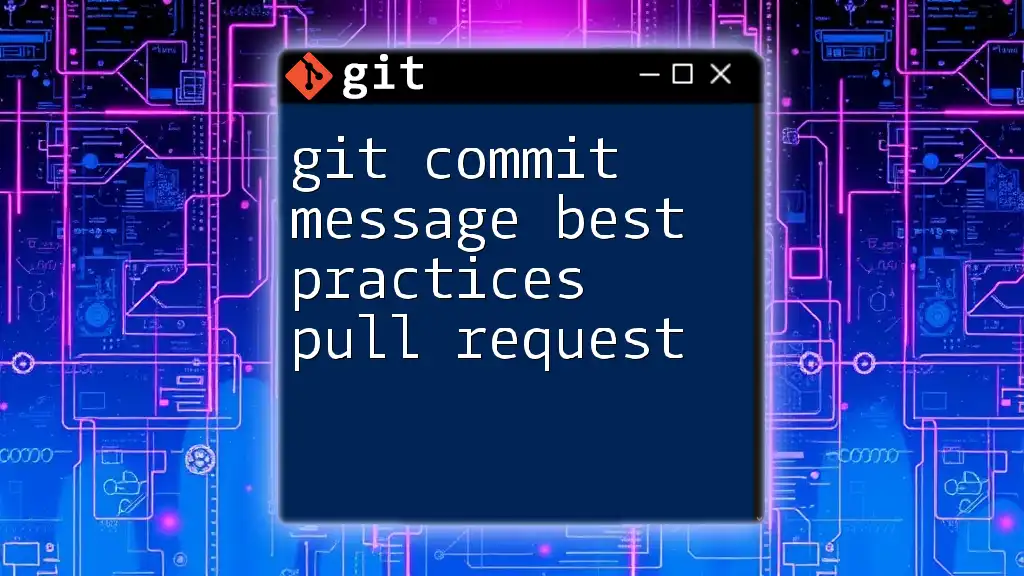
Common Pitfalls to Avoid
When composing your commit messages, steer clear of vague descriptions like "Fix stuff." These kinds of messages fail to provide meaningful context and can lead to confusion, especially in larger teams.
Another potential misstep is overloading your commit messages with too much information. It's essential to keep messages focused and relevant. Each commit should ideally represent a singular, coherent change.
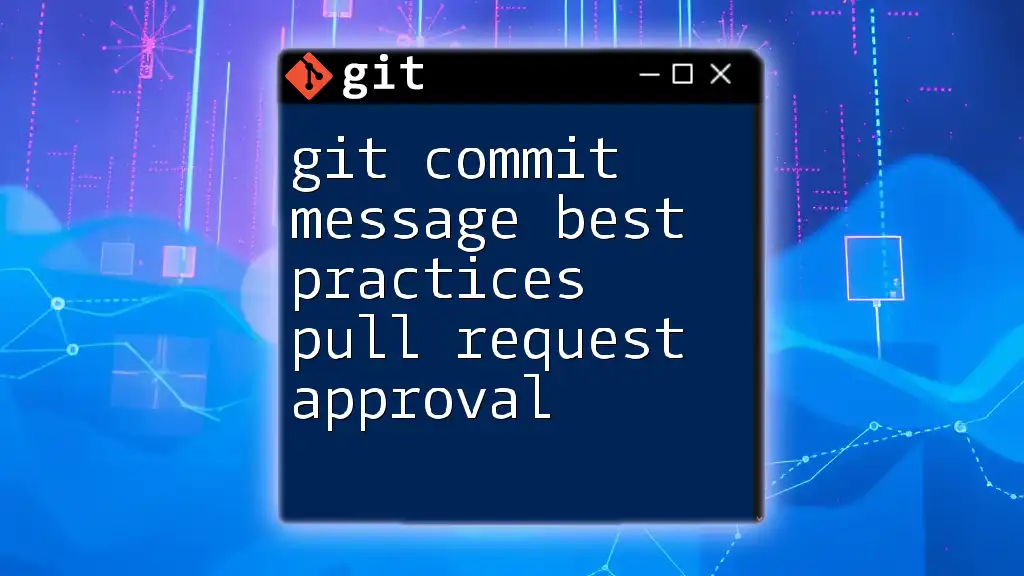
Tools to Improve Commit Message Quality
To help maintain consistency and improve the quality of your commit messages, consider utilizing Git commit templates. A template can remind you to include essential information and format your messages properly.
Additionally, you might want to explore commit message linters. These tools can automatically validate your commit messages against predefined rules, helping enforce the intended structure and style, enhancing overall project clarity.
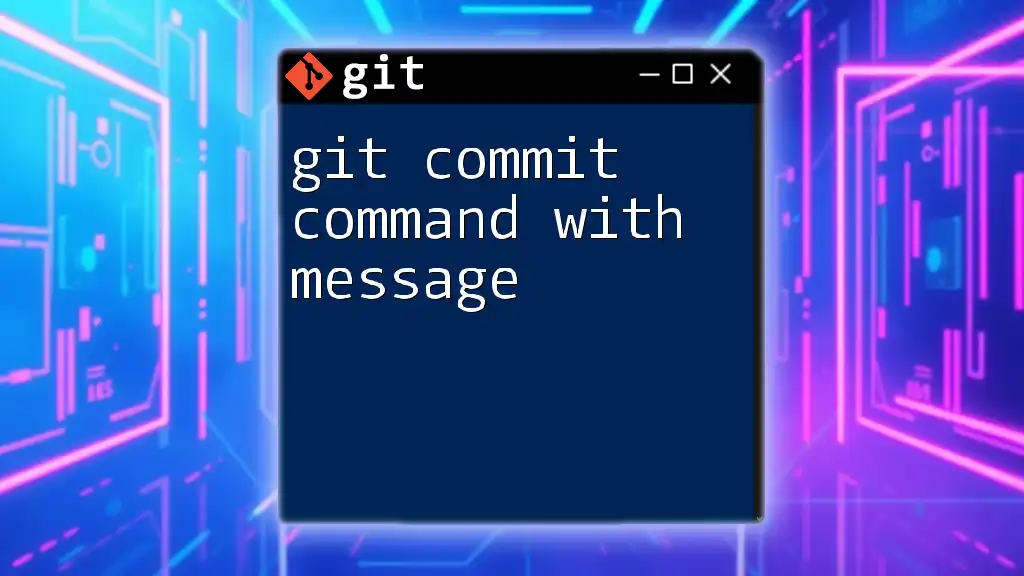
Conclusion
In summary, writing effective commit messages is crucial in the git commit with message and description process. Thoughtfully crafted messages contribute enormously to collaborative efforts and project maintainability. They not only encode the intent behind code changes but also serve as a rich historical reference as your project evolves. Implementing best practices in message formulation, like adopting the conventional commit format, can significantly enhance clarity for everyone involved in your project.
As you move forward, take these guidelines to heart and prioritize clarity and conciseness in your commit messages. By doing so, you ensure a more organized and communicative approach in your version control routines.

